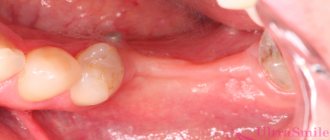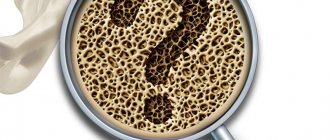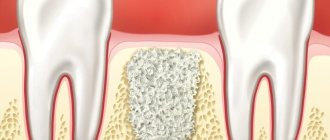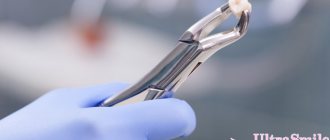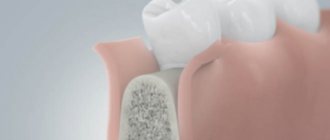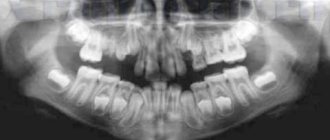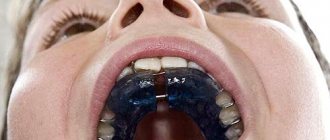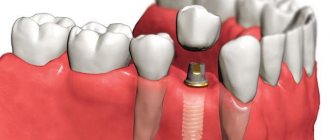Bone formation
Bone is a living tissue that contains blood vessels, nerve endings, and also takes an active part in the metabolic processes of the body. Bone is a constantly renewed system. In about ten years, an adult undergoes almost complete renewal of bone tissue (physiological regeneration of bone tissue). The life process of bones consists of two processes: the formation of new bone and the process of destruction of old bone (resorption). These processes depend on the activity of bone tissue cells: osteoblasts, osteoclasts and osteocytes.
- osteoblasts - cells that are responsible for the formation of new bone tissue; - osteoclasts - bone destroying cells that participate in bone remodeling; - osteocytes - cells that maintain the required level of tissue calcification and activate osteoblasts and osteoclasts.
Due to these cells, the process of deposition and leaching of calcium and other minerals from the bones constantly occurs. The release of calcium is achieved through the destruction (resorption) of bone tissue, and its binding is achieved through the formation of bone tissue. Bone formation is a continuous process.
In youth, synthesis processes predominantly occur. Bone mass increases and the process of mineralization proceeds intensively. The maximum values of mineral density are observed at the age of 30, after which they begin to decrease. This is a natural process that is associated with the fact that the body ages, and with age, the rate of metabolic processes decreases. There are a number of reasons that reduce bone density:
- poor absorption of calcium and other minerals involved in the process of bone tissue regeneration in the gastrointestinal tract;
- vitamin D deficiency;
- decreased levels of sex hormones.
What are osteotropic drugs
For a long time, prosthetics in dentistry have been faced with the problem that when the jaw is removed or undergoes various injuries, regeneration becomes practically impossible or becomes significantly more difficult for various reasons.
Today, thanks to the creation of bone material, restoration of the jaw, including both the aesthetic and functional parts, becomes possible.
The jawbone can atrophy for a number of reasons. This can be a trauma to the jaw (including traumatic tooth extraction), and the anatomical features of its structure, and inflammatory processes that affect the hard tissue of the jaw.
As a result of the above reasons, the volume of hard tissues decreases, which entails deformation of the shape of the jaw, facial contours, dysfunction of speech and eating.
Depending on the requirements of a particular clinical case, different types of substances can be used - osteoinductive, osteoconductive and osteoneutral.
These types differ in the mechanisms of the regenerative response of periodontal tissues in response to the introduction of a foreign body. Simply put, each of these types has a different effect on the process of growth and repair of hard tissues.
The purpose of using a surgical template for implantation, and the material used for manufacturing.
Come here if you are interested in details about two-stage dental implantation.
At this address https://zubovv.ru/implantatsiya/metodiki/polozhitelnyie-i-otritsatelnyie-ekspress.html you will find reviews about express dental implantation.
Restoration and regeneration of bone tissue
As mentioned, the process of bone tissue restoration depends not only on calcium and phosphorus, but also on the production of various hormones, as well as vitamins and microelements that take part in regeneration.
Calcium is a macro element. There is a lot of it in food and water. However, due to disruption of the gastrointestinal tract, its absorption may be impaired. To normalize the functioning of the gastrointestinal tract, it is best to use medicinal plants (elecampane-p, calendula-p), and not enzyme preparations (mezim, festal, pancreatin). Enzyme preparations suppress the body's production of its own enzymes, which leads to a large number of other diseases. Therefore, it is better to use medicinal plants, or better yet, the complex preparation “Mesi-Vit+” based on elecampane root and vitamin B6.
Osteogenesis and mineral metabolism depend on the production of the hormones estrogen, testosterone, and glucocorticoids. Estrogens and testosterone influence the process of osteoblast formation.
The effect of hormones on bone tissue
The hormone testosterone has a direct anabolic effect on bone tissue. The higher the level of the hormone testosterone, the more the processes of birth of bone cells occur in the bone tissue. In the presence of testosterone, the bone cell begins the process of division. This explains why men have stronger bones than women, since testosterone levels in men are approximately 10-20 times higher than in women. Estrogens have an indirect anabolic effect on bone tissue.
Estrogens enhance bone cell receptors for testosterone, i.e. increase the sensitivity of bone cells to testosterone circulating in the body. Thus forcing cells to divide. This explains the fact that the administration of hormone replacement therapy during menopause in women strengthens bone tissue. However, an artificial increase in estrogen causes hyperplastic changes in the uterus, thrombosis, and oncology. Therefore, we do not recommend the use of estrogens. Another function of estrogens is inhibition of osteoclast function. Estrogens balance the balance between osteoblasts and osteoclasts, and also influence the activity of bone cells and regulate the process of programmed cell death (apoptosis), so when estrogen levels decrease after menopause in women and testosterone levels in older men, bone tissue repair processes are disrupted, and As a result, its biochemical strength decreases and a tendency to fractures appears.
Using calcium and vitamin D supplements to treat low bone density
This treatment is ineffective and also dangerous due to the risk of calcium deposition in soft tissues (brain, blood vessels, kidneys, muscles). Calcium can only be absorbed by newly born bone cells. When a bone cell is born, it can increase its volume up to 100 times due to swelling with calcium. However, with age, testosterone levels decrease, so the process of cell division is weak.
A bone cell lives on average for about six months. When a bone cell dies, the osteoclast begins to disassemble it so that the osteoblast can later build a new bone cell in its place. When testosterone in bone tissue decreases, the effect of a dying village appears. There are no men, women have no one to get pregnant and give birth to. Bone cells die, but new ones are not born. Calcium from dead cells is again released into the blood to build new cells. If a new bone cell is not born, then the calcium consumer is not born. Therefore, the body tries to remove excess calcium from the body. To do this, it first closes the intestinal sphincters so that they do not absorb calcium from food. This is why calcium stops being absorbed from food.
The use of vitamin D3 leads to violence against the body. Vitamin D3 - opens closed intestinal sphincters, and calcium begins to enter the body. But who will be the consumer of this calcium? Bone cells that can absorb calcium were not born. Therefore, all forcibly absorbed calcium begins to settle in soft tissues. That is why cardiologists make a direct connection between the development of osteoporosis and vascular atherosclerosis. Excessively absorbed calcium is deposited on the walls of blood vessels, creating unevenness, which is immediately repaired by the body with the help of cholesterol. Therefore, taking calcium + vitamin D3 supplements, a person is at risk of developing cardiovascular diseases.
Components of bones
From a histological point of view, bone has several components. Any variety is presented:
- periosteum;
- compact substance;
- endostome.
The periosteum has a structure very similar to the perichondrium. The inner layer, osteogenic, contains loose connective tissue with a large number of osteoclasts, osteoblasts, and blood vessels.
Endosteum, a membrane that covers the canal from the inside. The main composition of this layer is loose fibrous connective tissue. There are osteobastes and osteoclasts. The tasks of this bone include its nutrition, growth in thickness, and restoration.
The compact substance has three layers: the outer and inner are lamellar bone tissue, with an osteon layer located between them. Osteon is a structural and functional unit. Externally, this is a flat formation, which is represented by bone plates, concentrically directed, layered one on top of the other, resembling cylinders that are inserted one into another.
Between the plates there are depressions, lacunae, in which osteocytes are located. In the center there is a cavity containing a vessel; the canal is called the osteon or Haversian canal. Between the osteons there are plates of bone called intercalary osteons that are destroyed.
Bone tissue needs easily digestible calcium
In this regard, there is no point in taking calcium and vitamin D3 supplements if the level of testosterone in the body is low. Since only testosterone has a direct effect on the absorption of drugs that restore bone density, complex treatment is necessary to restore bone tissue. Along with the use of calcium supplements, it is important to restore normal testosterone levels.
The drug “Osteomed” produced by Parapharm LLC, which contains drone brood, which is a donor of sex hormones, will help you cope with this task.
"Osteomed" contains calcium in an easily digestible form. "Osteomed" replenishes calcium deficiency in the body. Calcium compounds provide additional calcium, and drone brood retains it and maintains the level of androgens (male sex hormones), so that calcium is used for its intended purpose.
Also, the state of bone tissue metabolism largely depends on thyroid hormones, which stimulate osteoclasts. With increased thyroid function, the process of bone remodeling accelerates, while the rates of resorption and bone formation increase. The predominance of the process of bone tissue resorption over bone formation negatively affects calcium balance and reduces bone mass. The drug Thyreo-Vit, which contains white cinquefoil, which has a beneficial effect on the functioning of the thyroid gland, will help normalize the function of the thyroid gland.
wishes you good health.
Transplant price
The cost of transplantation may vary. First of all, it depends on what kind of material is chosen for planting on the deformed area.
The most expensive is the collection of donor material , which, moreover, requires special processing. The implant removal procedure itself costs approximately 30,000 to 36,000 rubles.
The use of drugs of animal or synthetic origin will cost the patient much less - on average from 6,000 to 10,000 rubles. In addition, the cost of the procedure may include a protective membrane - the price of such products varies from 3,000 to 11,000 rubles.
Another key point that determines the cost of the service is the extent of the work performed.
Depending on how many teeth the damage covers, the cost of the operation can vary from 30,000 to 70,000 or more rubles.
In addition, it is worth considering the cost of preliminary tests, anesthesia, preliminary preparation procedures, as well as medications used during the recovery period. This does not include the cost of doctor consultations and examinations carried out before transplantation.
In the video, a specialist talks about the specifics of building up bone tissue during dental implantation.
